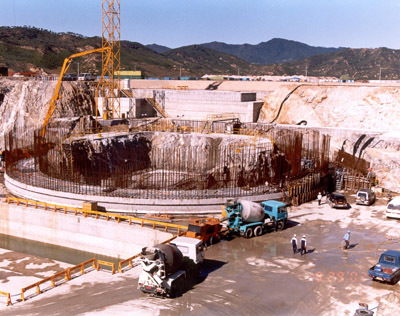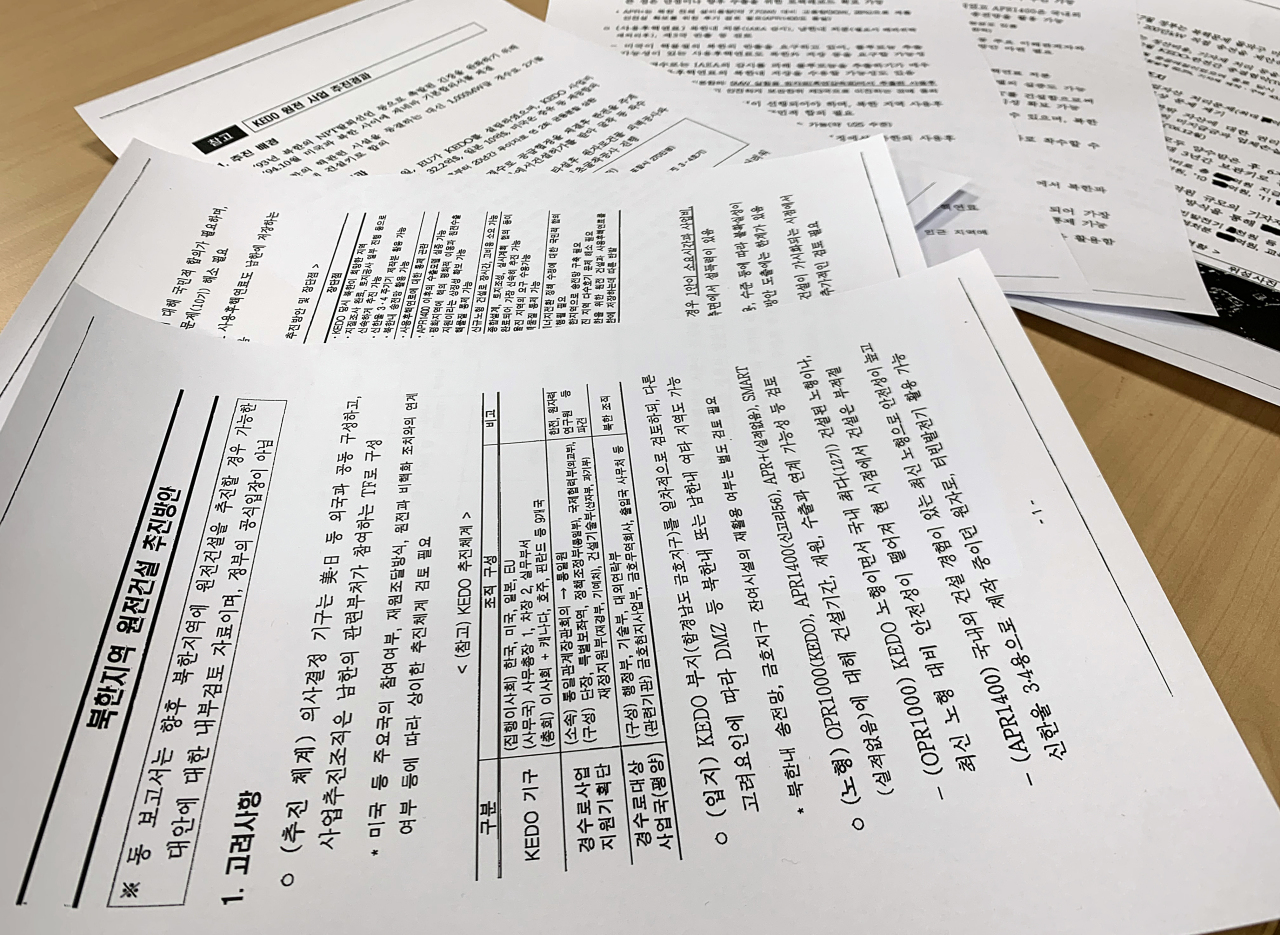[Newsmaker] Cheong Wa Dae rules out disclosing USB handed over to North during 2018 summit
No practical benefits seen from exposing classified file, expert says, and doing so could lead to dispute
By Lee Ji-yoonPublished : Feb. 2, 2021 - 15:09

Cheong Wa Dae on Tuesday ruled out disclosing the contents of a flash drive containing a broad cross-border economic cooperation vision that President Moon Jae-in handed over to North Korean leader Kim Jong-un during their first summit meeting in 2018.
“It is an irresponsible request,” Choi Jae-sung, the president’s senior secretary for political affairs, said in a radio interview in response to the opposition bloc’s demand for a full disclosure of the contents of the USB.
“We cannot disclose documents exchanged during a summit meeting because of baseless allegations.”
The USB is now at the center of the political brouhaha that has escalated over the Energy Ministry’s deleted documents containing a feasibility report on building a nuclear power plant in North Korea that was written in May 2018, a month after the inter-Korean summit.
The ministry said the report was written as part of brainstorming ideas for internal review only and was not reflected in its final draft on plans for inter-Korean projects at the time. Cheong Wa Dae also refuted claims that they had discussed the nuclear power plant idea with other ministries upon the summit talks, citing the sensitivity of the issue under heavy sanctions imposed by the US and the UN.
But the main opposition People Power Party raised speculation that the government could have traded the construction of a nuclear power plant for a summit with the North, with the party leader Kim Chong-in accusing the act of “benefiting the enemy.”
“The claims are no more than stocking an outdated ideological strife in election seasons. It is a huge mistake,” Choi added, hinting at legal action against Kim
It is widely known that the 40-page document stored on the USB contains envisioned plans for inter-Korean cooperation projects across almost all sectors, which the two Koreas could carry out together once the North agrees to work toward the denuclearization of the Korean Peninsula. Also included are possible energy projects like refurbishing the North’s aging power plants and using renewable energy for electricity.
But the presidential office seemed cautious about disclosing the full version of the classified diplomatic records without the consent of the other country, the North. Currently, cross-border contacts have been halted amid the chilled inter-Korean relations since the breakdown of the second summit meeting between the North Korean leader and then US President Donald Trump in 2019.
“Most notably, Cheong Wa Dae may see no practical benefits from disclosing the records involving the North. Depending on the contents, that could lead to another dispute,” said Shin Beom-chul, director of the Center for Diplomacy and Security at the Korea Research Institute for National Strategy.
“But they are also losing an opportunity to put an end to the unnecessary controversies.”
Shin, who also reviewed the ministry’s report that was disclosed Monday, added that there is nothing in the report itself that could be seen as profiting the North.
“The issue is how the whole process is communicated with the public in a transparent way. Until the full disclosure of the ministry’s documents and the USB, people’s suspicions will not subside.”

Late Monday, the Energy Ministry disclosed a six-page feasibility report, part of the 17 deleted documents containing the issue of building a nuclear power plant in the North.
According to the report, there were possible locations for the plant – the North, the South and the demilitarized zone, the border between the two Koreas.
The report said the North is the best, if the fuel is handled properly, considering time and cost efficiency. The North model is based on the KEDO project in 1995 when the Korean Peninsula Energy Development Organizationa, an international consortium involving South Korea, the US, Japan and the EU, sought to build two 1,000 megawatt light-water reactors in the eastern coastal village of Kumho. But the project was suspended due to the North’s repeated nuclear provocations.
The report also made it clear that it was difficult to lay out specific action plans in the absence of a breakthrough in the stalled denuclearization talks between the US and the North.
The documents in question came to light while prosecutors were investigating the government’s decision to terminate the operation of Wolsong-1, the country’s second-oldest nuclear reactor, as part of Moon’s push for increased use of renewable energy and reduced reliance on nuclear power.
Three officials from the Energy Ministry have been indicted on charges of destroying government records and obstructing a state audit for deleting some 500 computer files, including 174 written during the previous administration, right before the start of a planned audit. The ministry has not yet revealed why the officials deleted the files secretly, citing the ongoing investigation.
By Lee Ji-yoon (jylee@heraldcorp.com)












![[Today’s K-pop] BTS pop-up event to come to Seoul](http://res.heraldm.com/phpwas/restmb_idxmake.php?idx=644&simg=/content/image/2024/04/17/20240417050734_0.jpg&u=)





![[KH Explains] Hyundai's full hybrid edge to pay off amid slow transition to pure EVs](http://res.heraldm.com/phpwas/restmb_idxmake.php?idx=652&simg=/content/image/2024/04/18/20240418050645_0.jpg&u=20240419100350)

![[Today’s K-pop] Zico drops snippet of collaboration with Jennie](http://res.heraldm.com/phpwas/restmb_idxmake.php?idx=642&simg=/content/image/2024/04/18/20240418050702_0.jpg&u=)